Motion User Guide
- Welcome
- What’s new
-
- Intro to basic compositing
-
- Intro to transforming layers
-
- Intro to transforming layers in the canvas
- Transform layer properties in the canvas
- Transform tools
- Change layer position, scale, or rotation
- Move a layer’s anchor point
- Add a drop shadow to a layer
- Distort or shear a layer
- Crop a layer
- Modify shape or mask points
- Transform text glyphs and other object attributes
- Align layers in the canvas
- Transform layers in the HUD
- Transform 2D layers in 3D space
-
- Intro to behaviors
- Behaviors versus keyframes
-
- Intro to behavior types
-
- Intro to Parameter behaviors
- Audio behavior
- Average behavior
- Clamp behavior
- Custom behavior
- Add a Custom behavior
- Exponential behavior
- Link behavior
- Logarithmic behavior
- MIDI behavior
- Add a MIDI behavior
- Negate behavior
- Oscillate behavior
- Create a decaying oscillation
- Overshoot behavior
- Quantize behavior
- Ramp behavior
- Randomize behavior
- Rate behavior
- Reverse behavior
- Stop behavior
- Track behavior
- Wriggle behavior
-
- Intro to Simulation behaviors
- Align to Motion behavior
- Attracted To behavior
- Attractor behavior
- Drag behavior
- Drift Attracted To behavior
- Drift Attractor behavior
- Edge Collision behavior
- Gravity behavior
- Orbit Around behavior
- Random Motion behavior
- Repel behavior
- Repel From behavior
- Rotational Drag behavior
- Spring behavior
- Vortex behavior
- Wind behavior
- Additional behaviors
-
- Intro to using generators
- Add a generator
-
- Intro to image generators
- Caustics generator
- Cellular generator
- Checkerboard generator
- Clouds generator
- Color Solid generator
- Concentric Polka Dots generator
- Concentric Shapes generator
- Gradient generator
- Grid generator
- Japanese Pattern generator
- Lens Flare generator
- Manga Lines generator
- Membrane generator
- Noise generator
- One Color Ray generator
- Op Art 1 generator
- Op Art 2 generator
- Op Art 3 generator
- Overlapping Circles generator
- Radial Bars generator
- Soft Gradient generator
- Spirals generator
- Spiral Drawing generator
- Use Spiral Drawing onscreen controls
- Star generator
- Stripes generator
- Sunburst generator
- Truchet Tiles generator
- Two Color Ray generator
- Save a custom generator
-
- Intro to filters
- Browse and preview filters
- Apply or remove filters
-
- Intro to filter types
-
- Intro to Color filters
- Brightness filter
- Channel Mixer filter
- Color Adjustments filter
- Color Balance filter
- Example: Color-balance two layers
- Color Curves filter
- Use the Color Curves filter
- Color Reduce filter
- Color Wheels filter
- Use the Color Wheels filter
- Colorize filter
- Contrast filter
- Custom LUT filter
- Use the Custom LUT filter
- Gamma filter
- Gradient Colorize filter
- HDR Tools filter
- Hue/Saturation filter
- Hue/Saturation Curves filter
- Use the Hue/Saturation Curves filter
- Levels filter
- Negative filter
- OpenEXR Tone Map filter
- Sepia filter
- Threshold filter
- Tint filter
-
- Intro to Distortion filters
- Black Hole filter
- Bulge filter
- Bump Map filter
- Disc Warp filter
- Droplet filter
- Earthquake filter
- Fisheye filter
- Flop filter
- Fun House filter
- Glass Block filter
- Glass Distortion
- Insect Eye filter
- Mirror filter
- Page Curl filter
- Poke filter
- Polar filter
- Refraction filter
- Ring Lens filter
- Ripple filter
- Scrape filter
- Sliced Scale filter
- Use the Sliced Scale filter
- Sphere filter
- Starburst filter
- Stripes filter
- Target filter
- Tiny Planet filter
- Twirl filter
- Underwater filter
- Wave filter
-
- Intro to Stylize filters
- Add Noise filter
- Bad Film filter
- Bad TV filter
- Circle Screen filter
- Circles filter
- Color Emboss filter
- Comic filter
- Crystallize filter
- Edges filter
- Extrude filter
- Fill filter
- Halftone filter
- Hatched Screen filter
- Highpass filter
- Indent filter
- Line Art filter
- Line Screen filter
- MinMax filter
- Noise Dissolve filter
- Pixellate filter
- Posterize filter
- Relief filter
- Slit Scan filter
- Slit Tunnel filter
- Texture Screen filter
- Vignette filter
- Wavy Screen filter
- About filters and color processing
- Publish filter controls to Final Cut Pro
- Using filters on alpha channels
- Filter performance
- Save custom filters
-
- Intro to 360-degree video
- 360-degree projects
- Create 360-degree projects
- Add 360-degree video to a project
- Create a tiny planet effect
- Reorient 360-degree media
- Creating 360-degree templates for Final Cut Pro
- 360-degree-aware filters and generators
- Export and share 360-degree projects
- Guidelines for better 360-degree projects
-
- Intro to settings and shortcuts
-
- Intro to Keyboard shortcuts
- Use function keys
- General keyboard shortcuts
- Audio list keyboard shortcuts
-
- Tools keyboard shortcuts
- Transform tool keyboard shortcuts
- Select/Transform tool keyboard shortcuts
- Crop tool keyboard shortcuts
- Edit Points tool keyboard shortcuts
- Edit shape tools keyboard shortcuts
- Pan and Zoom tools keyboard shortcuts
- Shape tools keyboard shortcuts
- Bezier tool keyboard shortcuts
- B-Spline tool keyboard shortcuts
- Paint Stroke tool keyboard shortcuts
- Text tool keyboard shortcuts
- Shape mask tools keyboard shortcuts
- Bezier Mask tool keyboard shortcuts
- B-Spline Mask tool keyboard shortcuts
- Transport control keyboard shortcuts
- View option keyboard shortcuts
- HUD keyboard shortcuts
- Inspector keyboard shortcuts
- Keyframe Editor keyboard shortcuts
- Layers keyboard shortcuts
- Library keyboard shortcuts
- Media list keyboard shortcuts
- Timeline keyboard shortcuts
- Keyframing keyboard shortcuts
- Shape and Mask keyboard shortcuts
- 3D keyboard shortcuts
- Miscellaneous keyboard shortcuts
- Touch Bar shortcuts
- Move assets to another computer
- Work with GPUs
- Glossary
- Copyright and trademarks

Modify or animate a generator in Motion
You can modify an applied generator in the Inspector or HUD, or by using onscreen transform controls. You can animate generator parameters with keyframes or behaviors, and you can use a generator as the basis for a particle system. After you customize a generator, you can save it to the Library for future use.
While each generator is unique, there are a small set of controls that are shared between all generators. See Controls common to all generators.
Modify a generator in the Inspector
In the Layers list, Timeline, or canvas in Motion, select an applied generator.
Note: For information on adding a generator to your project, see Add a generator.
In the Generator Inspector, adjust the parameter controls.
For information on controls specific to each generator, see Intro to image generators or Intro to text generators.
Modify a generator using onscreen controls
As with any other image layer in Motion, you can make basic transform adjustments to an applied generator (modifying size, distorting, changing the anchor point, and so on) using onscreen transform handles. Changes to these basic transform parameters are reflected in the Properties Inspector. Additionally, some generators have specific onscreen controls—usually to adjust the Center or Offset parameter—that you enable by selecting the Adjust Item tool in the canvas toolbar. The Spiral Drawing generator has unique onscreen controls that simulate a stator (ring) and a rotor (gear) of a spiral-drawing tool. These changes are reflected in the Generator Inspector. For more information about the transform tools, see Transform layer properties in the Motion canvas.
In Motion, select a generator in Layers list, Timeline, or canvas.
In the canvas toolbar, click and hold the transform tools pop-up menu, then choose Adjust Item.
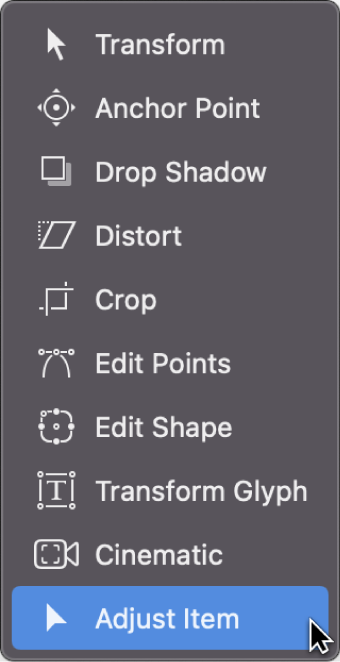
Note: If the generator has no onscreen controls, the Adjust Item tool is not available.
In the center of the canvas, the Center onscreen control or the Offset onscreen control appears (depending on the generator).
In the canvas, drag the Center control or the Offset control to a new position.
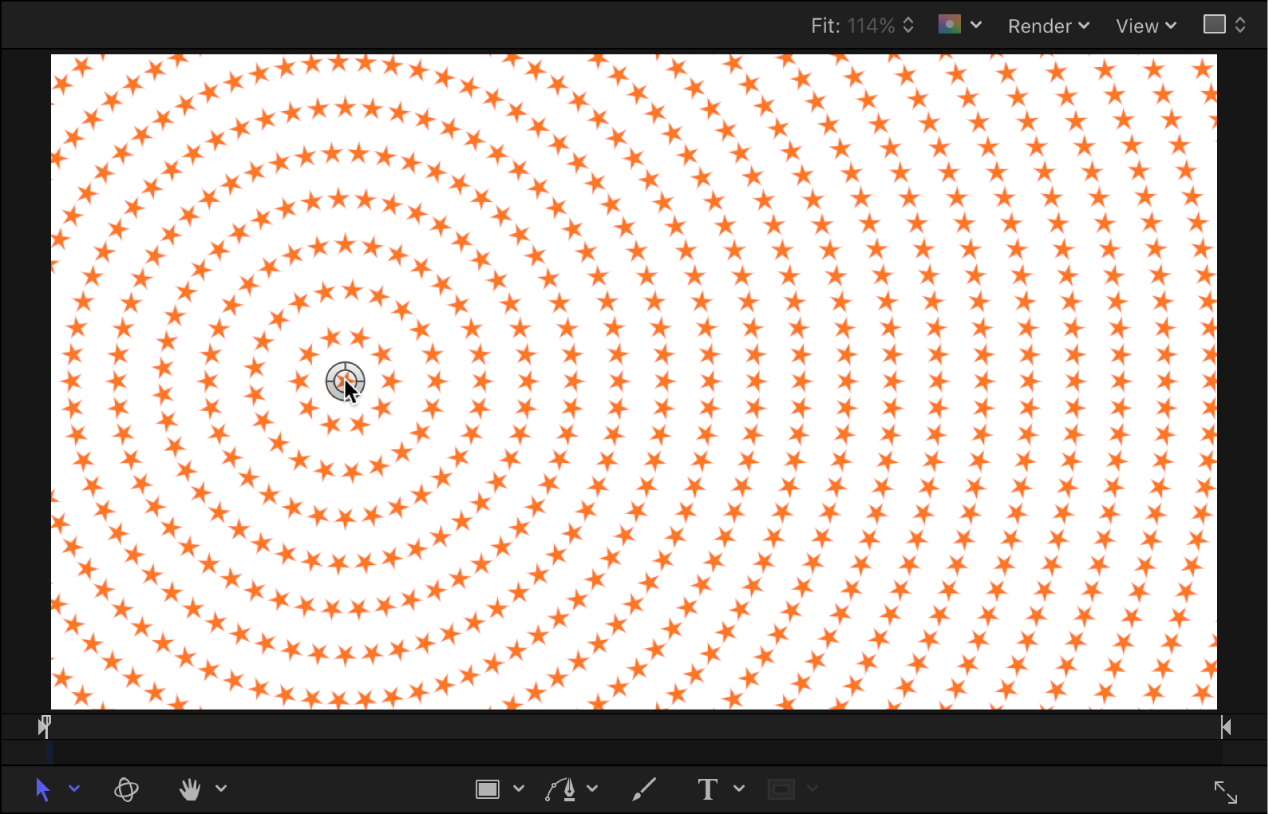
The Offset or Center parameter is adjusted accordingly in the Generator Inspector.
Tip: Always adjust transform-related generator parameters (such as center and angle) using onscreen controls (or using the controls in the Generator Inspector) rather than from the Properties Inspector; the equivalent controls in the Properties Inspector cause the generator to be resampled, resulting in a lower-quality output.
For more information about the Offset and Center parameters, see the controls descriptions for Image Generators.
Animate a generator using keyframes
Although most generators create static images, you can animate the parameters of a generator to create a moving texture over time.
In the Layers list, canvas, or Timeline in Motion, select the generator you want to animate.
Move the playhead to the frame where you want the animation to begin, then press A to turn on keyframe animation recording.
In the Generator Inspector or using the onscreen controls (if available), adjust a generator parameter.
A keyframe is added to the parameter.
Move the playhead to the frame where you want to create the next keyframe, then adjust the generator parameter again.
Play the project (press the Space bar).
The animated generator parameters create a moving, changing texture based on your keyframes.
When you’re satisfied with the result, press A again to turn off keyframe recording.
Note: For more information on keyframing, see Intro to keyframing.
Animate a generator using behaviors
As with all other objects in Motion, you can apply Basic Motion, Parameter, or Simulation behaviors to a generator. The following example applies the Random parameter behavior to randomize the opacity of the Star generator, creating a flickering star.
Add the Star generator to your Motion project.
In the Generator Inspector, move the pointer over the right side of the Spike Opacity parameter row.
The Animation menu (a down arrow) appears.
Click the Animation menu for the Spike Opacity parameter, then choose Add Parameter Behavior > Randomize.
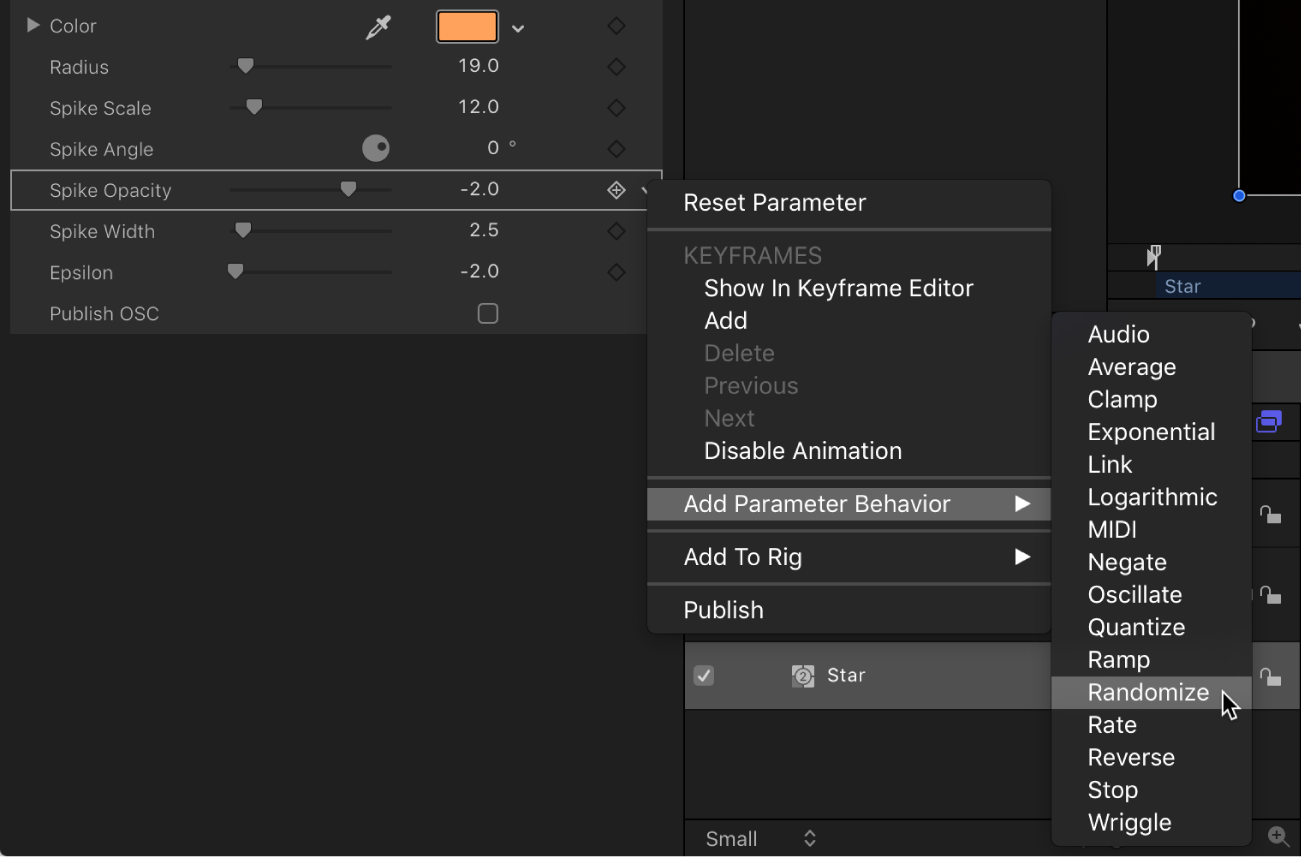
The Randomize parameter behavior is applied to the Spike Opacity parameter, and the Behaviors Inspector is displayed so you can adjust the Randomize parameters.
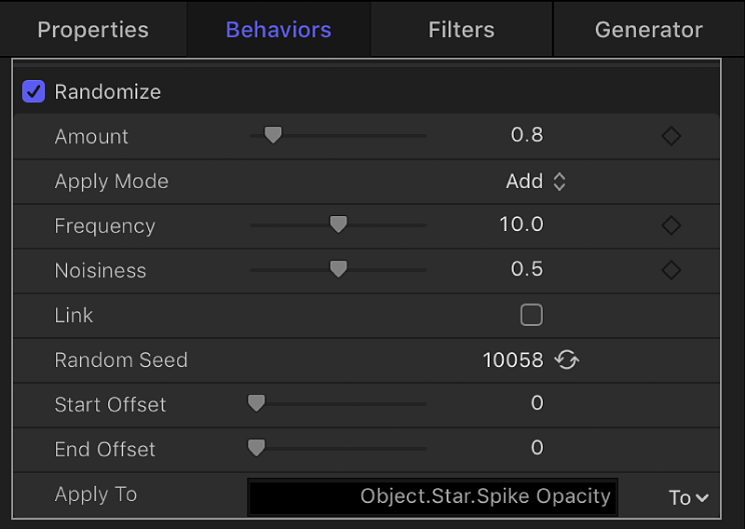
In the Behaviors Inspector, drag the Amount slider to the right to increase the randomization effect.
In the timing toolbar (above the Timeline), click the Play button (or press the Space bar).
Because the Randomize parameter behavior is applied to the opacity of the star spikes, the star appears to flicker. When a Parameter behavior is applied to a parameter in a generator, a behavior icon (a gear) appears in the Generator Inspector in the row for the affected parameter. In this example, the behavior icon appears in the Spike Opacity parameter row.
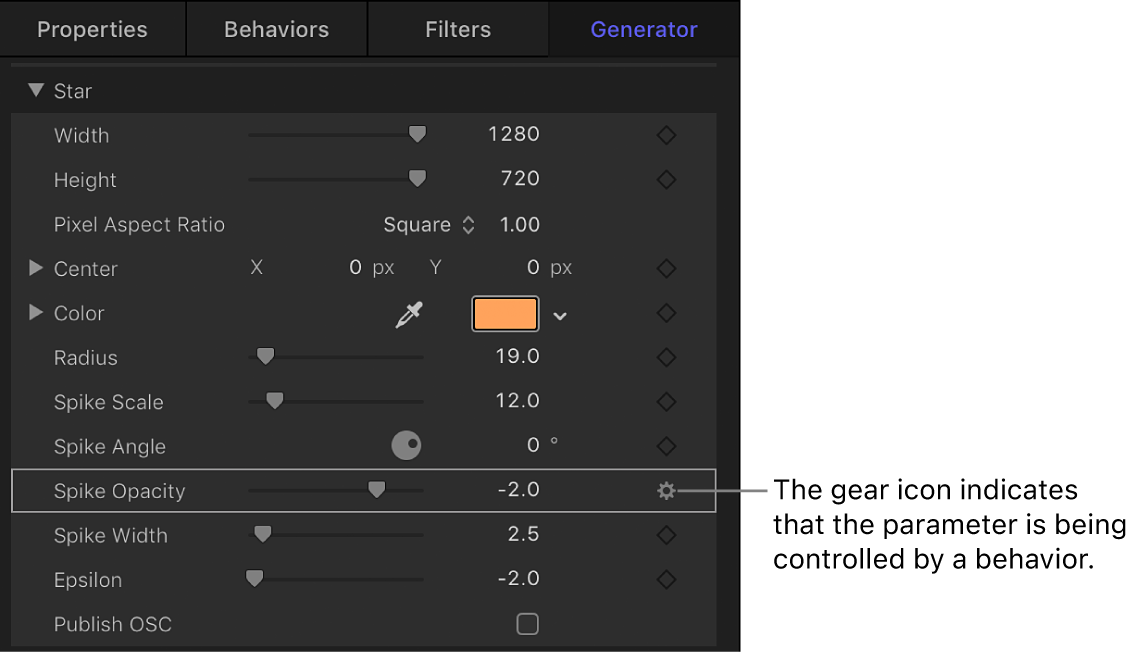
To increase or decrease the effect of the flicker, adjust the Randomize parameters (in the Behaviors Inspector).
You can show the Behaviors Inspector by Control-clicking the parameter name and choosing the applied behavior from the shortcut menu.
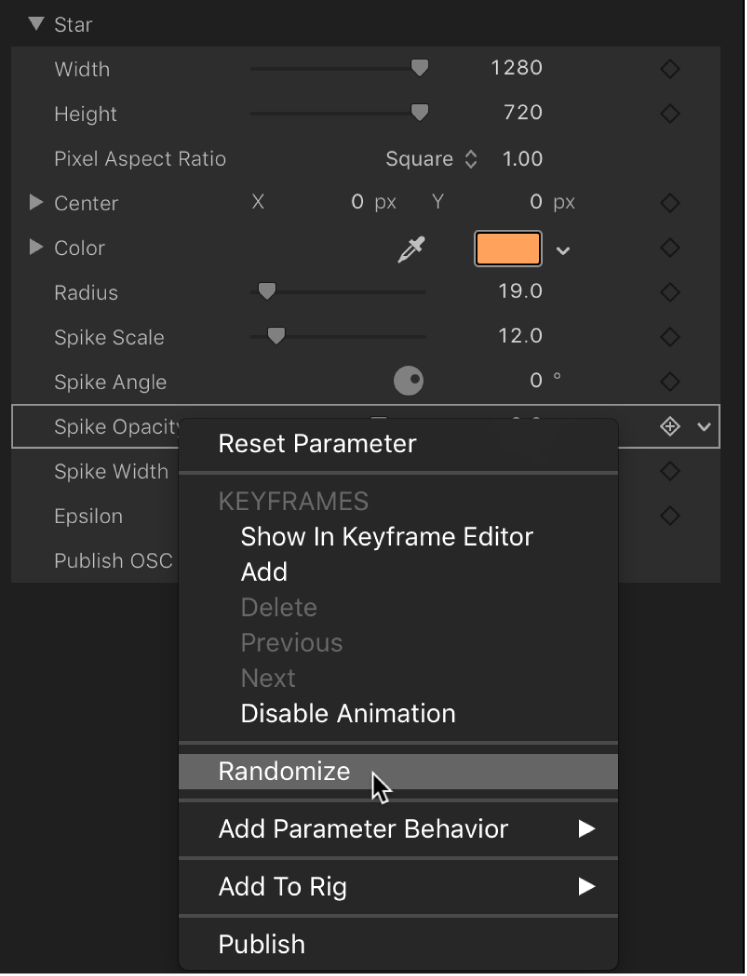
For more information on using Parameter behaviors such as the Randomize behavior, see Randomize behavior.
Use a generator as a particle cell source
As with other objects, generators can be used as a source for particle cells. The following example uses the Soft Gradient generator. To give your particle system more flexibility and reduce processing strain on your computer, scale the generator down in the Generator Inspector.
Add the Soft Gradient generator to your Motion project.
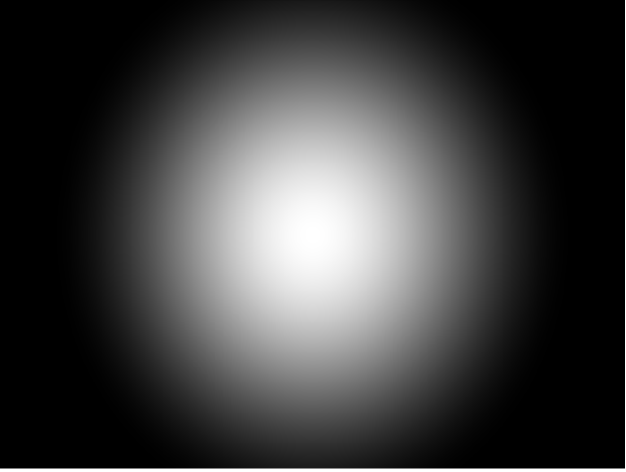
In the HUD or Generator Inspector, reduce the Radius value.
This example uses a Radius value of 40.
Reduce the Width and Height values.
In the canvas, the gradient and its bounding box are scaled down.
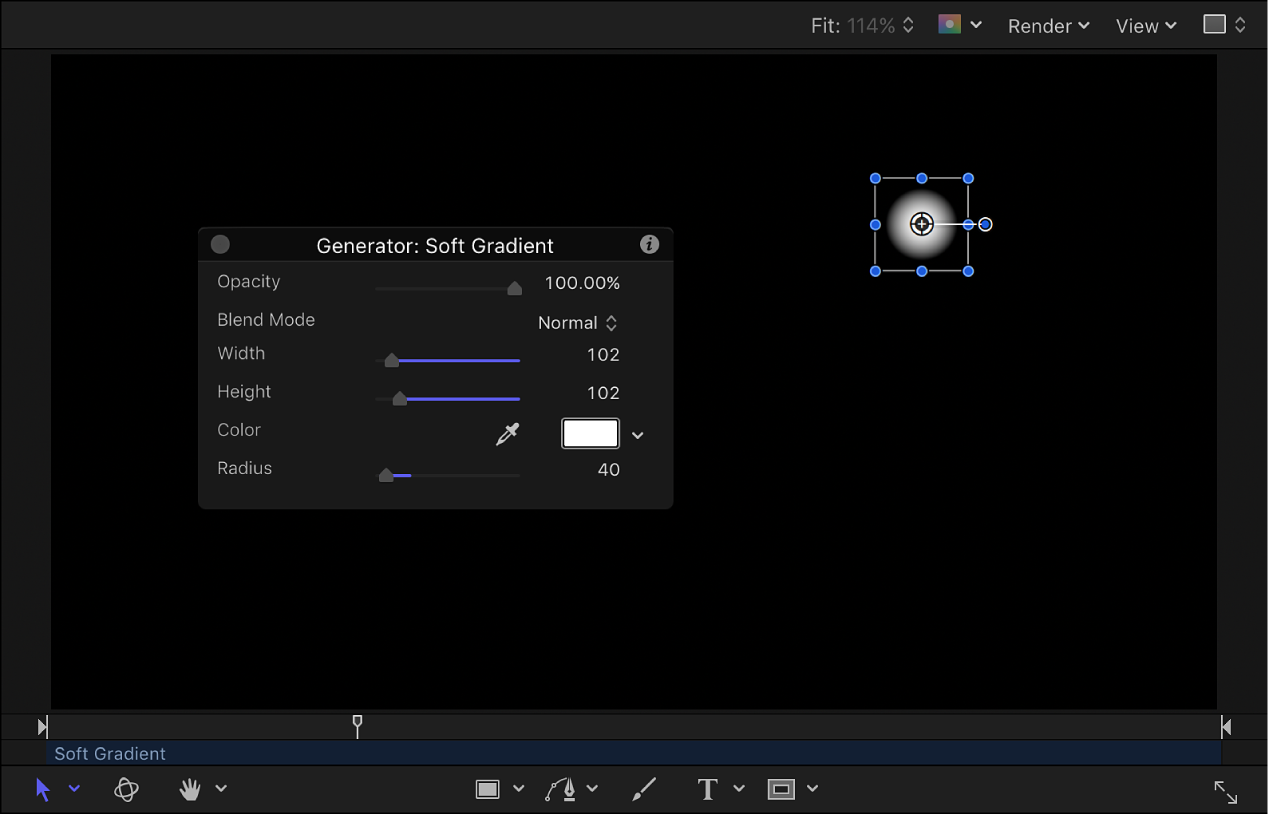
With the generator still selected, do one of the following:
Press E.
In the toolbar, click Make Particles.
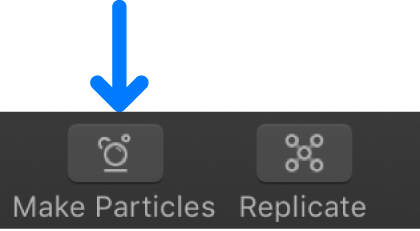
After you add an emitter to the project, the new Emitter object is selected In the Layers list; a duplicate of the source object (the Soft Gradient generator) becomes an emitter cell for the new particle system; and the original source object (the Soft Gradient generator) is disabled.
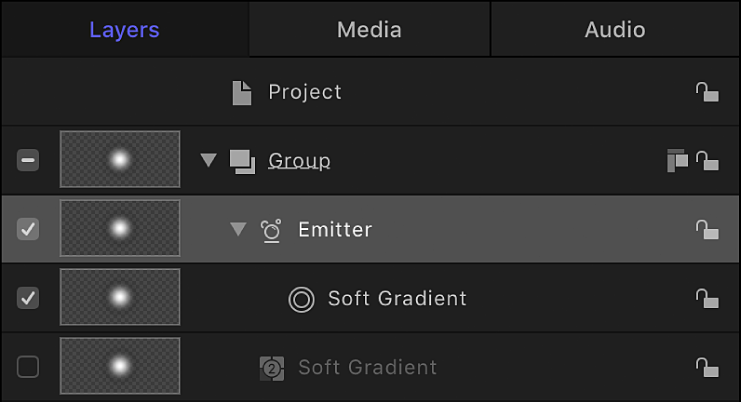
In the canvas, the emitter bounding box appears. You can transform the bounding box using the onscreen controls or controls in the Inspector. The particle appears in the canvas in the same location as the original object. Although it appears as if the particle is selected, it’s the bounding box for the emitter that’s selected.
Press the Space bar to play the project.
Soft gradient particles are emitted.
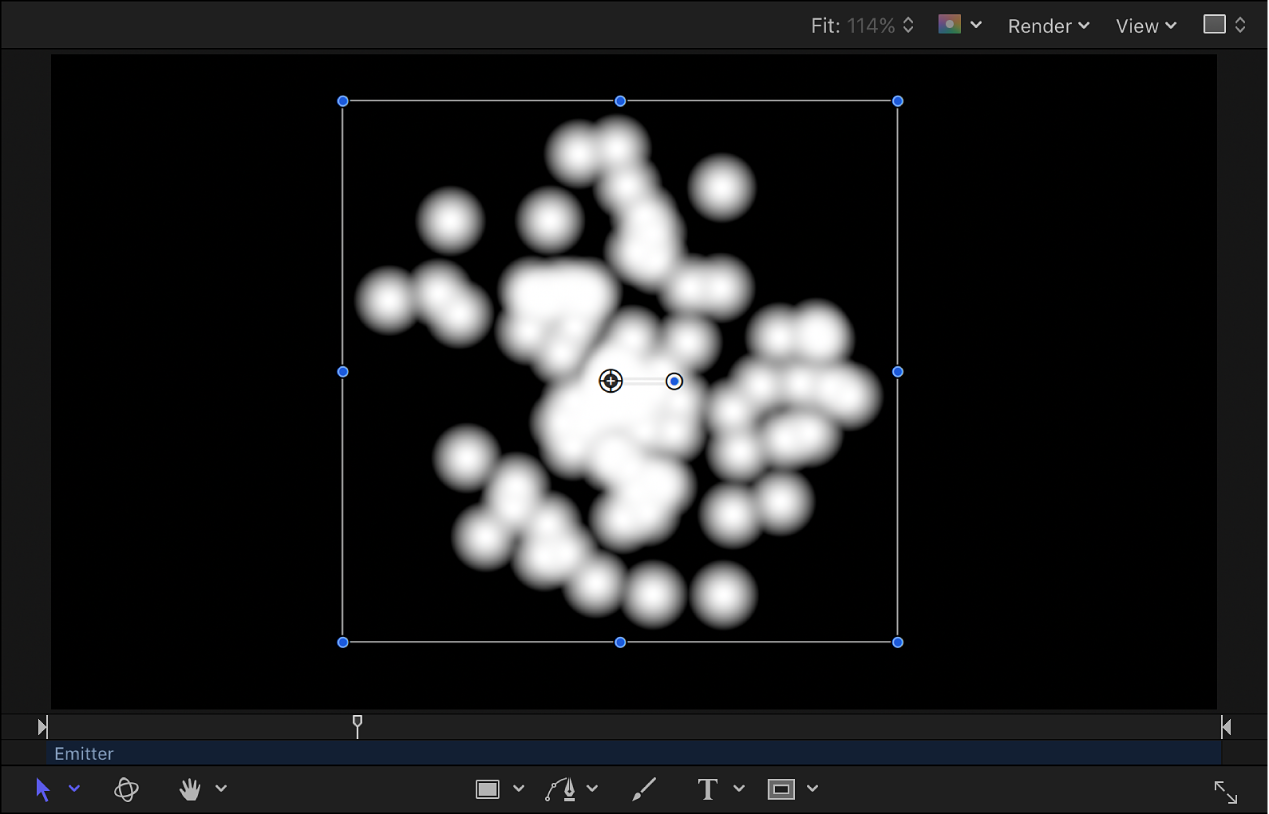
You can change the particle color, emitter shape, scale, emission angle, birth rate, and so on in the Emitter Inspector or HUD. For more information on working with particles, see Intro to particles.
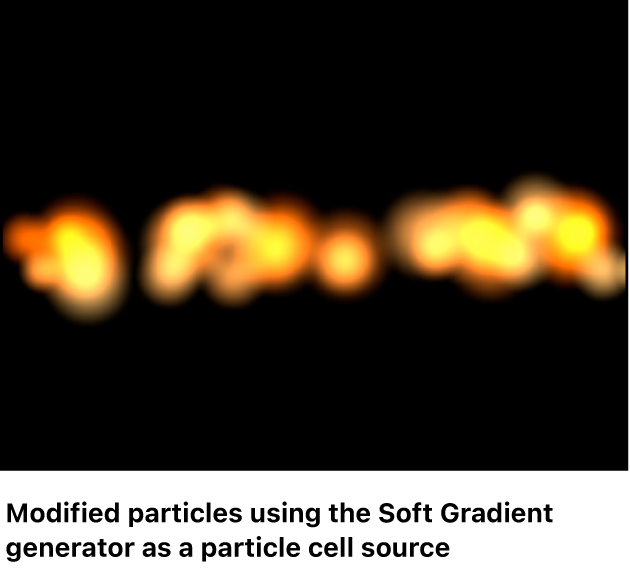
Download this guide: PDF